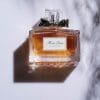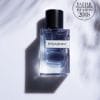“They are all fresh, as they start from the idea of haute cologne,” says Olivier Polge, perfume creator for Chanel, on his new fragrance collection Les Eaux de Chanel. “My work was to anchor that in different scents that translate into an idea of cities. Travel can be imaginary, and these work in the same way as fragrances that make you travel.”
We are in seated at a private salon at Chanel’s Place Vendome boutique in Paris, smack in the middle of winter, and these fragrances are making me dream of sunnier climes, and of Gabrielle Chanel’s personal places – Deauville, where she opened her first store in 1913; Biarritz, the high-society seaside town where she opened her first couture boutique; and Venice, the Byzantine city that greatly inspired her rich aesthetic.
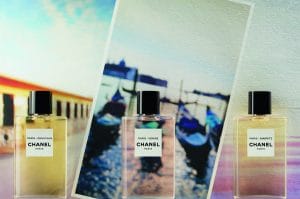
“It’s a subjective point of view,” Polge explains. “They are not only the names of these places, but the prefix Paris gives it that point of view, of course linked to the history and interests of Coco Chanel.”
Working from a place of origin – the history of Chanel – and taking it to a different plateau with a distinct style all of his own, Polge is crafting a new era for the perfume division that for 32 years had his father Jacques Polge lead and create some of the world’s most iconic scents. The “new generation” of fragrances that Polge has created since joining five years ago include Chanel No 5 L’Eau, Boy Chanel and Misia from the Les Exclusifs De Chanel collection, and recently the new bestseller, Gabrielle Chanel. “My purpose is to create something that is true to my vocabulary and identity, in the style of Chanel,” he says. “The idea is to bring something new and meaningful within the spectrum.”
Let’s start with Paris-Deauville…
OP: Deauville is a city in Normandy, which has a countryside that is very green, very luxurious. It’s destination where a lot of people from Paris go for the weekend. And it has this feeling that I wanted to translate so it’s green, woody, watery. It has an aromatic basil introduction, there’s some floral, jasmine, geranium and it dries down with patchouli. A green, woody scent at the end.
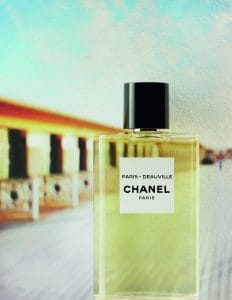
Paris-Deauville
I love how you expressed the bitterness of leaves. You kind of have that towards the end. That green rawness.
Pick a leaf, exactly. It’s a raw green scent that is very fresh.
How do you interpret Deauville of then and and how you want it for now?
I am not trying to illustrate a certain period of time. I don’t think about Deauville of the time of Gabrielle Chanel and, in the same way, we don’t make fragrances today the same way we used to at that time. Really, the idea is more to pick an ambience, a feeling, starting from this place and bring it somewhere else.
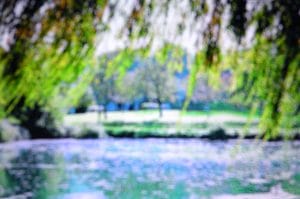
Deauville
How about Paris-Biarritz?
The sea in Biarritz has a big role as the inspiration as the ocean is very powerful. I feel all those images of Gabrielle Chanel with a surfboard, where her world is more sporty, more dynamic, more energetic. I try to translate that with a certain fizzy citrus oil. It even has an ozonic aspect, almost like liquid, which translates this vivid impression of the air. And the dry down is woody with vetiver roots.
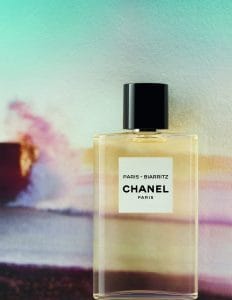
Paris-Biarritz
It’s quite voluptuous for a sporty scent. I can imagine the rolling waves …
Yes, what is important is that it has an enveloping side but is not dark. It stays dynamic. It’s true that these are more complex even though I was looking for a certain simplicity effect. These are fragrances with a real evolution and even though they are light, they stay on the skin well.
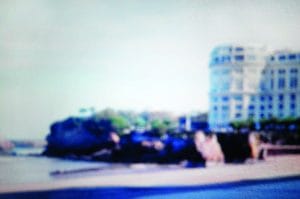
Biarritz
And Paris-Venise is altogether very different.
I think it’s the most city-like, and is more “cultured” of the three. When Gabrielle Chanel went to Venice, she developed her taste for the Baroque, for byzantine art, which in terms of fragrance, reminds me of oriental scents. This is why there’s this powdery effect. What links it with the other haute colognes is the orange flower oil or neroli but then it goes in deeper, with iris, vanilla-like notes, and cedar woods. In Paris-Venice, the scent of neroli is more apparent.

Paris-Venise
They are very beautiful scents, very exciting. Why did you choose the inspiration of these places?
I was inspired by impressions. Places are just an alibi. I’m making a link with certain impressions of those places with these scents that make you travel to the countryside, to certain cities, and the feelings that come with it.
Three different places, very much linked to the history of Coco Chanel. How do these scents expand on the story of Gabrielle Chanel and her history?
Gabrielle Chanel’s history is taken as a starting point, a vocabulary, with which I played and created. The idea is not to have a nostalgic look on the time that she spent on the first boutique she’s opened in Deauville or so on, but more taking it as a starting point and build something of tomorrow.
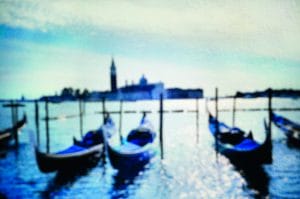
Venice
For the new generation who don’t quite understand the history of Gabrielle Chanel or the house of Chanel, how can they connect with these scents?
I think that you don’t really need to know Chanel’s history or those places to understand the fragrances. But I think that you can appreciate them and link them to something else that is important for you. At the same time, it should be taken as an opportunity to speak about Gabrielle Chanel’s history as well.
Which is your favourite?
I cannot create a fragrance that I don’t like so there is something of each that I like. What about you?
I like Biarritz the most. There is a certain effervescence to it that I love how you describe as “a cool dip in an icy pool on a hot sunny day”.
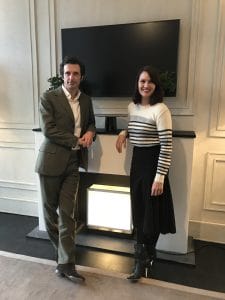
Perfumer Olivier Polge and Editor-in-Chief Natasha Kraal
Now talking about the actual work of creating fragrances, do you find that creating fragrances is about formulas or do you go with feelings? Is it emotive or scientific?
It’s a mixture of both. I think the most important is the impression and the feelings behind and the creation. Science is involved but good science has to be forgotten in the sense that it is not apparent. The luxury I have with Chanel is that, since we create and manufacture all our fragrances, part of my work is to also to create special grades of raw materials. This is very important because if you would compare it to colours for a painter, you are able to customize your materials and this makes my creative work richer.
How would you describe your approach to your work?
It’s difficult to say. People have such a fantasy about the work I do but in certain ways my work is very down-to-earth. I have a craft the same way a carpenter knows how to build a furniture, I know how to make the fragrances. My work is invisible. I like the dichotomy between this very down-to-earth technique with raw materials that are the results of crops and farmers’ work that leads me to a special creation…
What are your favorite ingredients?
I have plenty of raw materials that I like and mind you, not all raw materials smell good on their own. But among the raw materials, I always mention Iris, which is interesting as we extract the scent from the root, which brings an intense floral aspect.
Do you think destiny has lead you here? You’ve journeyed so far and wide in your career and so wide, how do you feel about coming back to Chanel where you started out as an intern? Do you feel you’re somewhat an “heir” to Jacques Polge (the former master perfumer of Chanel for 32 years)
I hope I have something to do with what I did and not only the result of being born (laughs)
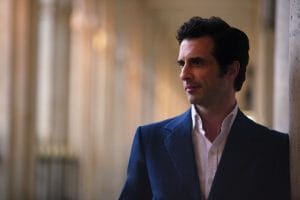
Courtesy
Can I ask you about your working relationship with your father? Does he give you feedback on your work?
Yes, he still comes to the office and he is aware about more or less, every single thing that happens. Having him aside of me, it would be pity to not ask him his advice or listen to his comments.
But you’re very much your own person.
Even though we both work for Chanel, Chanel has its own style as well. I think the purpose is to create something that is true to our vocabulary and identity and we are also always careful to never create the same type of fragrance as well. The idea is always to bring something new within the spectrum that is meaningful to us.


